A single prototype of each vehicle was produced but the efforts never progressed further.
The slow lumbering tanks would have certainly been no match for the German Panzers of the era.
Other captured tanks included a handful ofFrench Renault FT two-person light tanks.
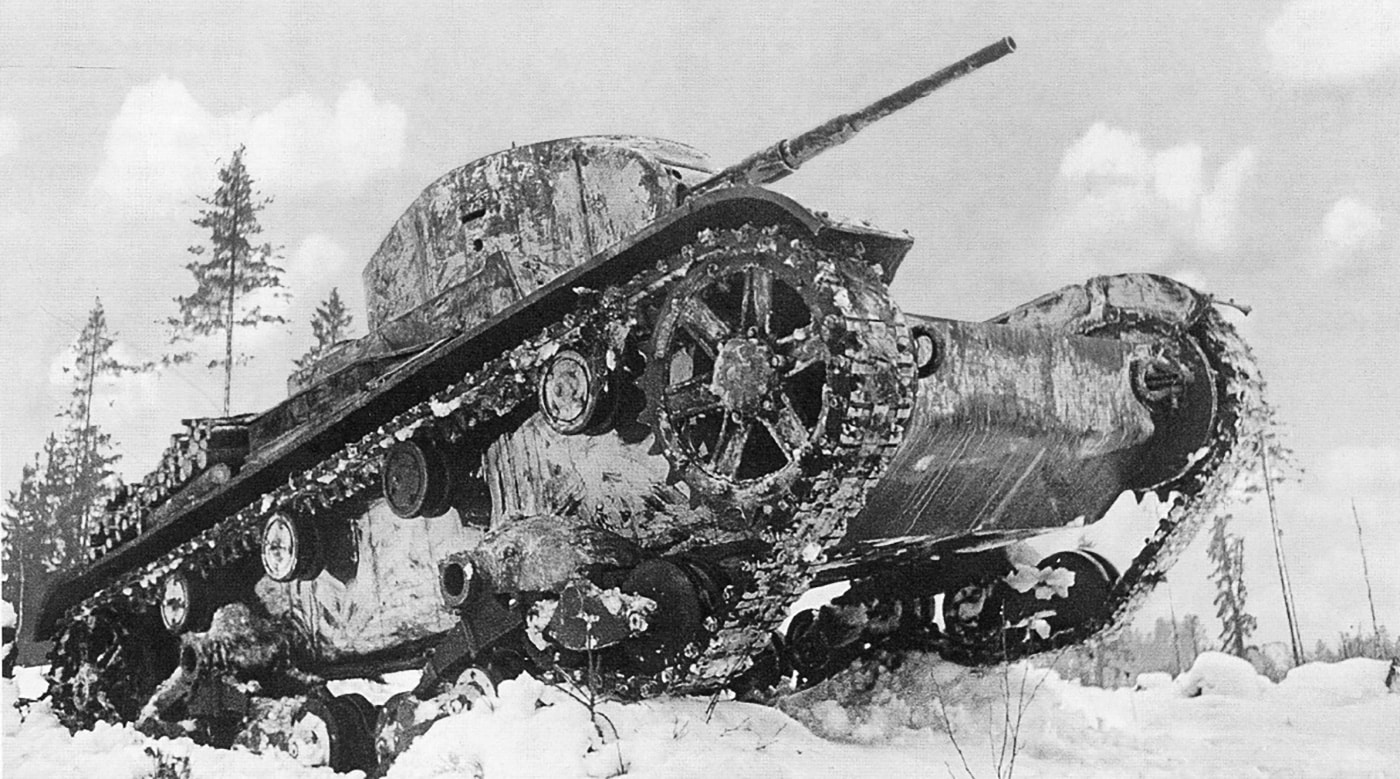
This T-26 tank was photographed during the Soviet invasion of Finland during World War II. Image: IWM
Dubbed the Russky Renault, it was hardly a portent for the classic Soviet tank designs to come.
Russian-built early versions were exact copies of the original Vickers design apart from armament changes.
Later models, however, were wholly Russian developments of the original design.
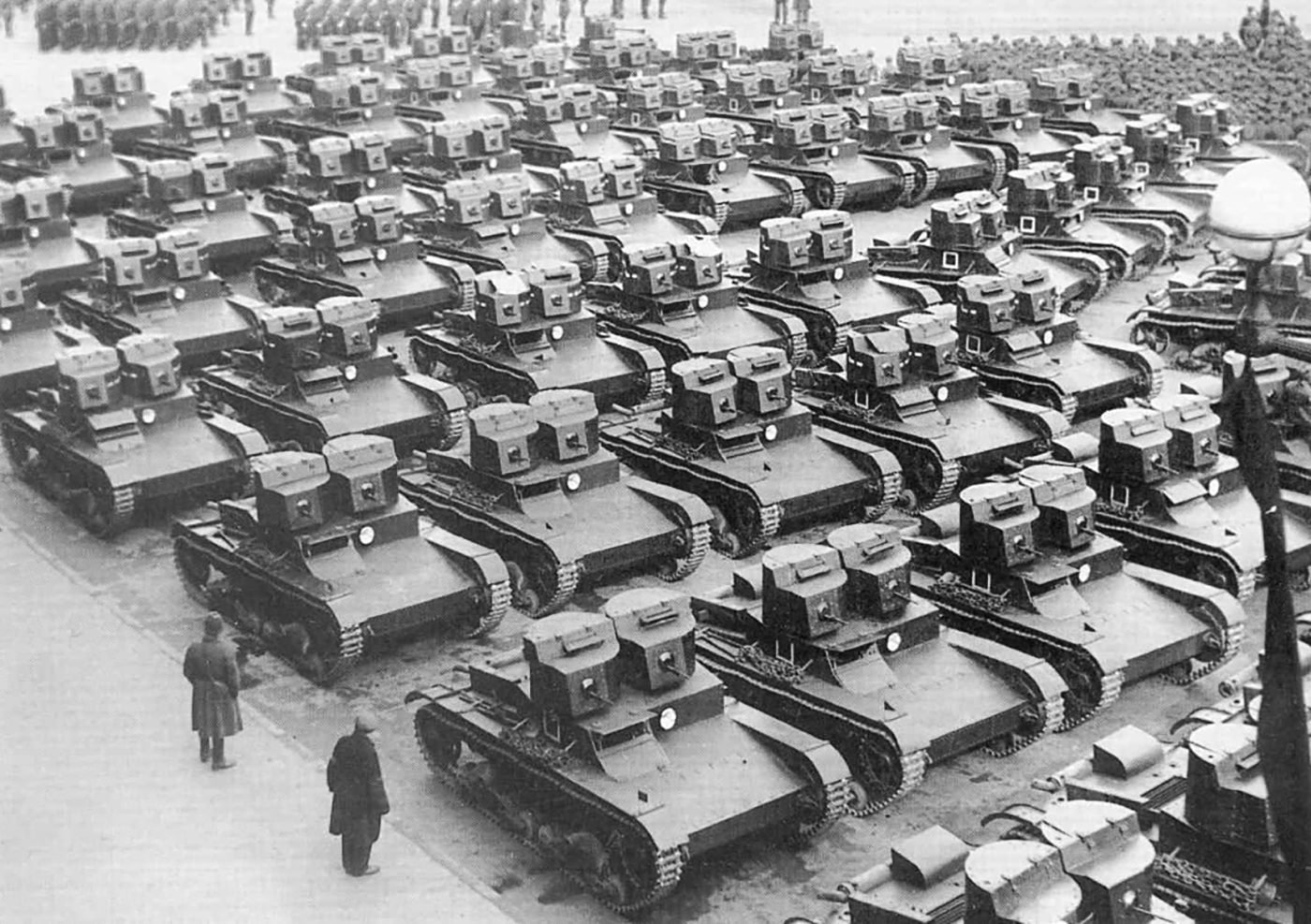
These dual turret T-26 tanks were photographed during a November parade in Leningrad on November 7, 1932. Image: IWM
In the curious twin turret arrangement with the Model A, the main armament consisted of two machine guns.
Each of those turrets had a certain degree of independent movement.
It was meant to provide a greater field of fire, yet actually limited instead.
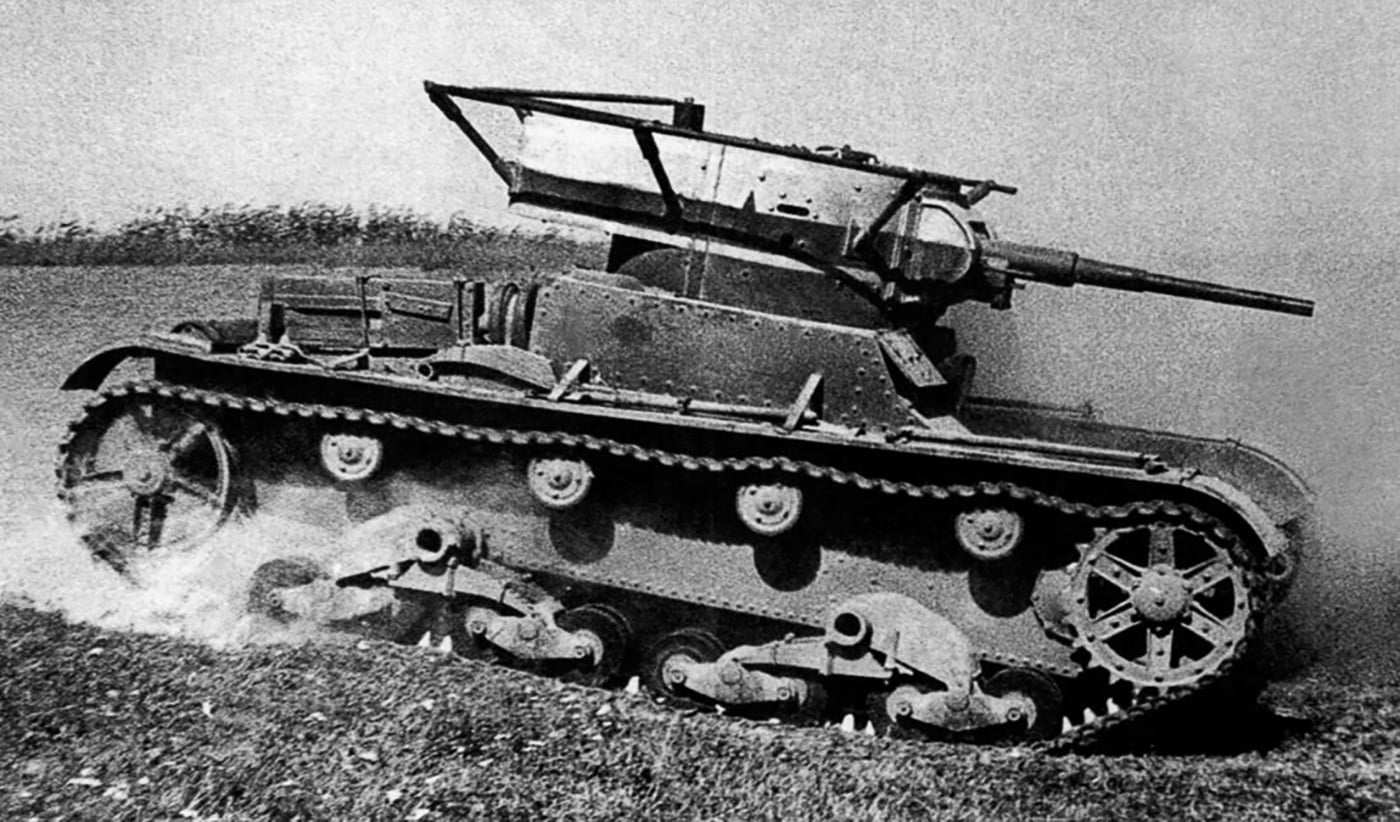
The T-26 tank in this photo is on maneuvers during the summer of 1935 near Kyiv, Ukraine. Image: IWM
Both are in museums in Russia.
In total, more than 10,000 T-26s were produced between 1931 and 1941.
These tanks proved to be far more than just an upgraded Vickers Mk.E.
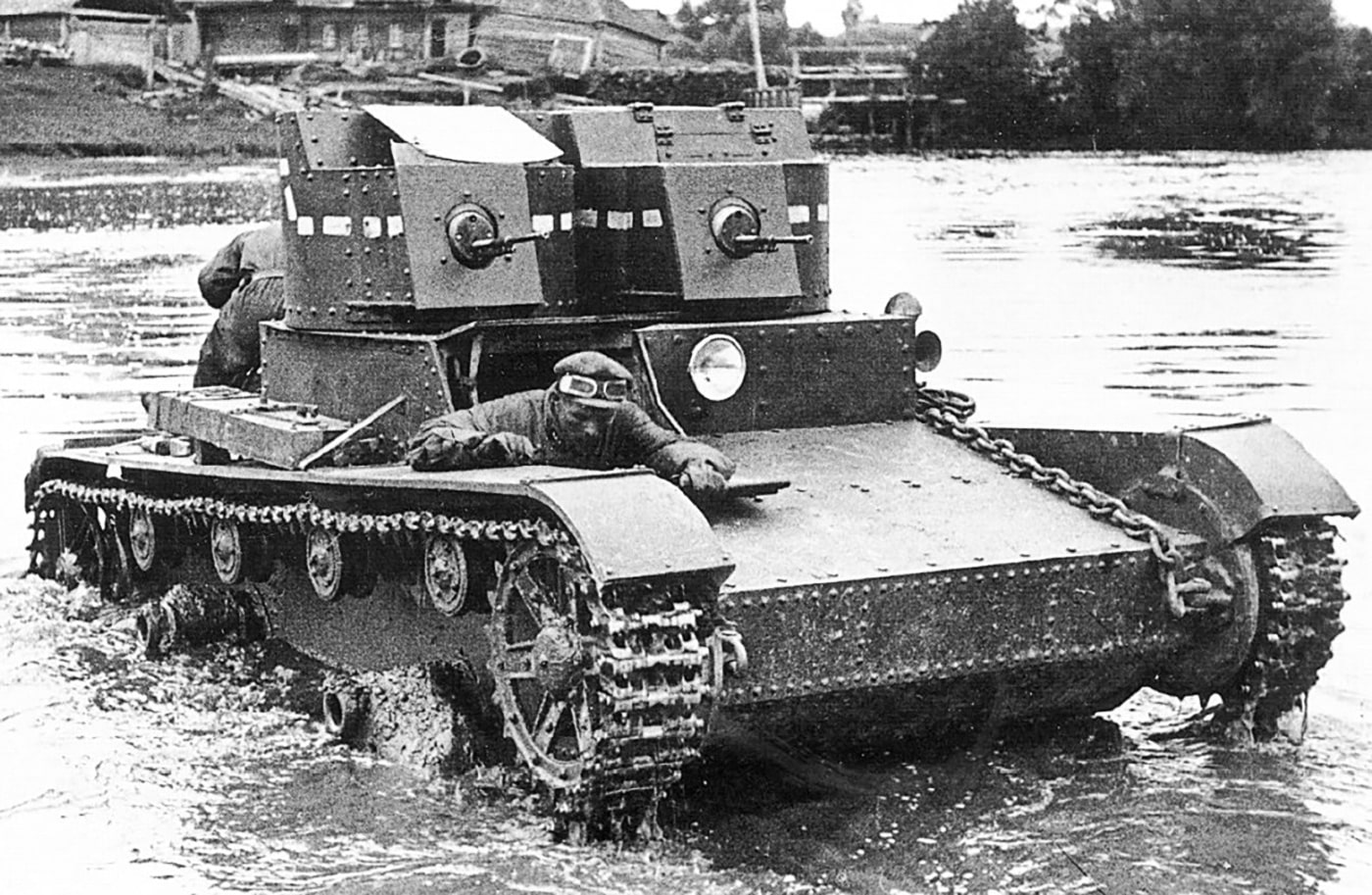
This T-26 tank fords a waterway during military exercises near Moscow in 1936. Image: IWM
Like the American tanks, the T-26s eventually evolved to a single turret design in the 1933 model.
This, alone, would have made the T-26 significant.
It was therefore decided to adopt a new version with an all-welded hull and turret.
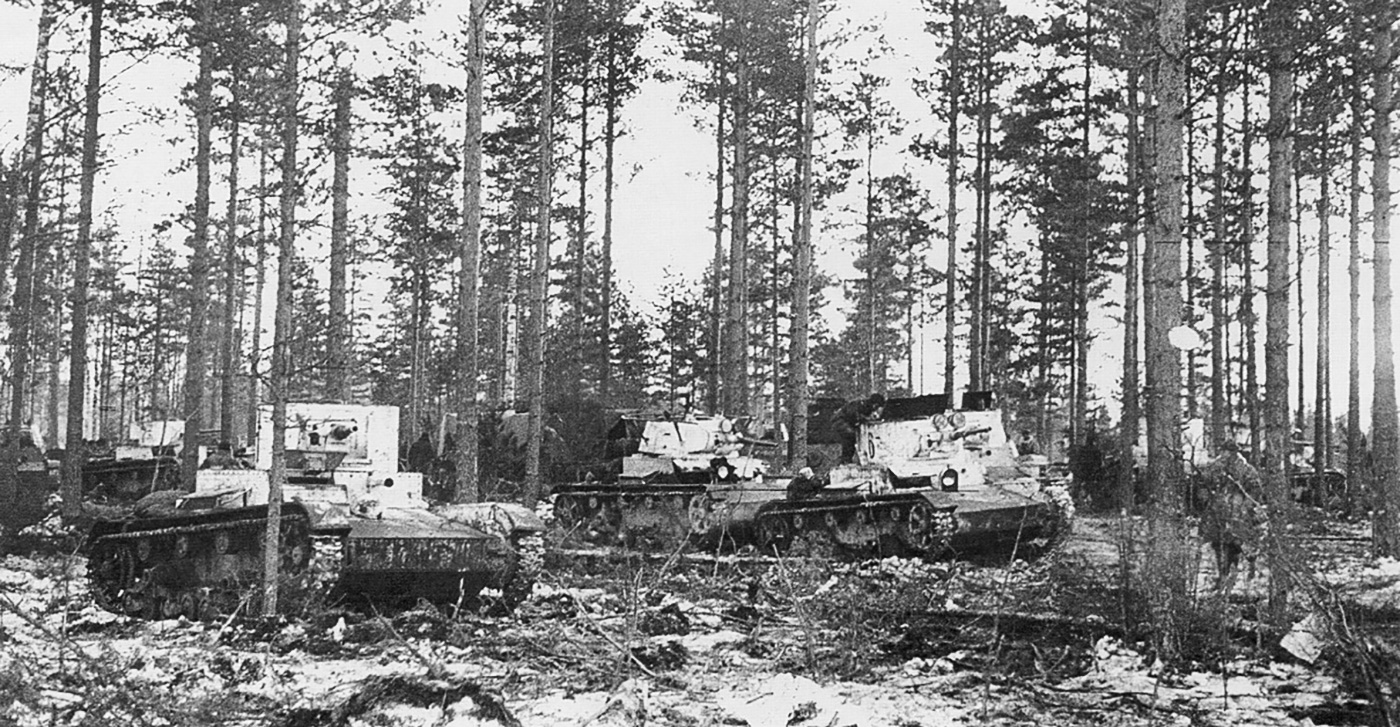
Soviet T-26 tanks move through Finland during its invasion of that country in February 1940. Image: IWM
That model became known as the T-26S.

This T-26 is shown undergoing repairs in Leningrad. The single turret identifies it as a Model B. Image: IWM
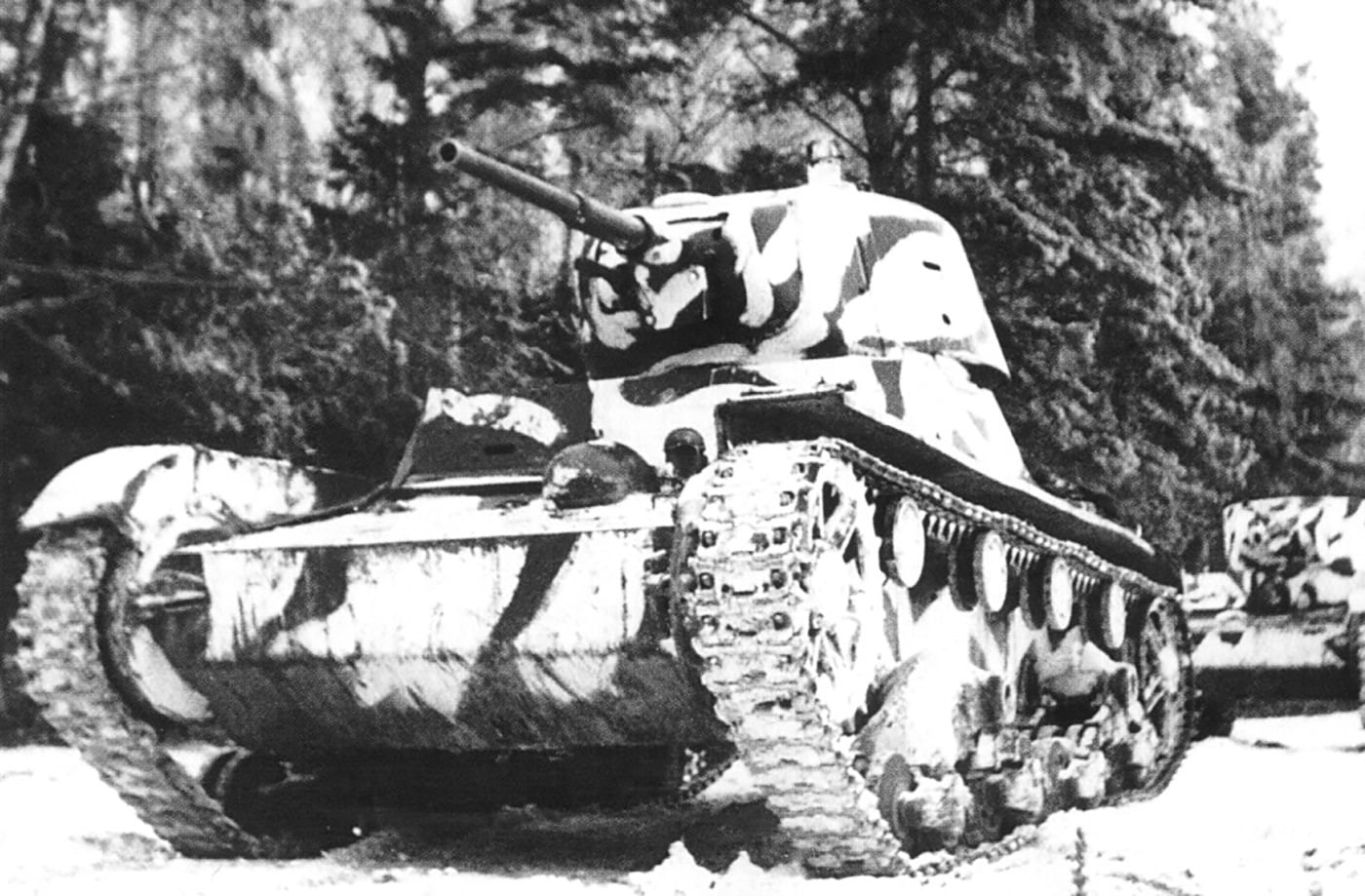
This column of Soviet T-26 tanks moves to meet the German advance into Russia in December 1941. Image: IWM
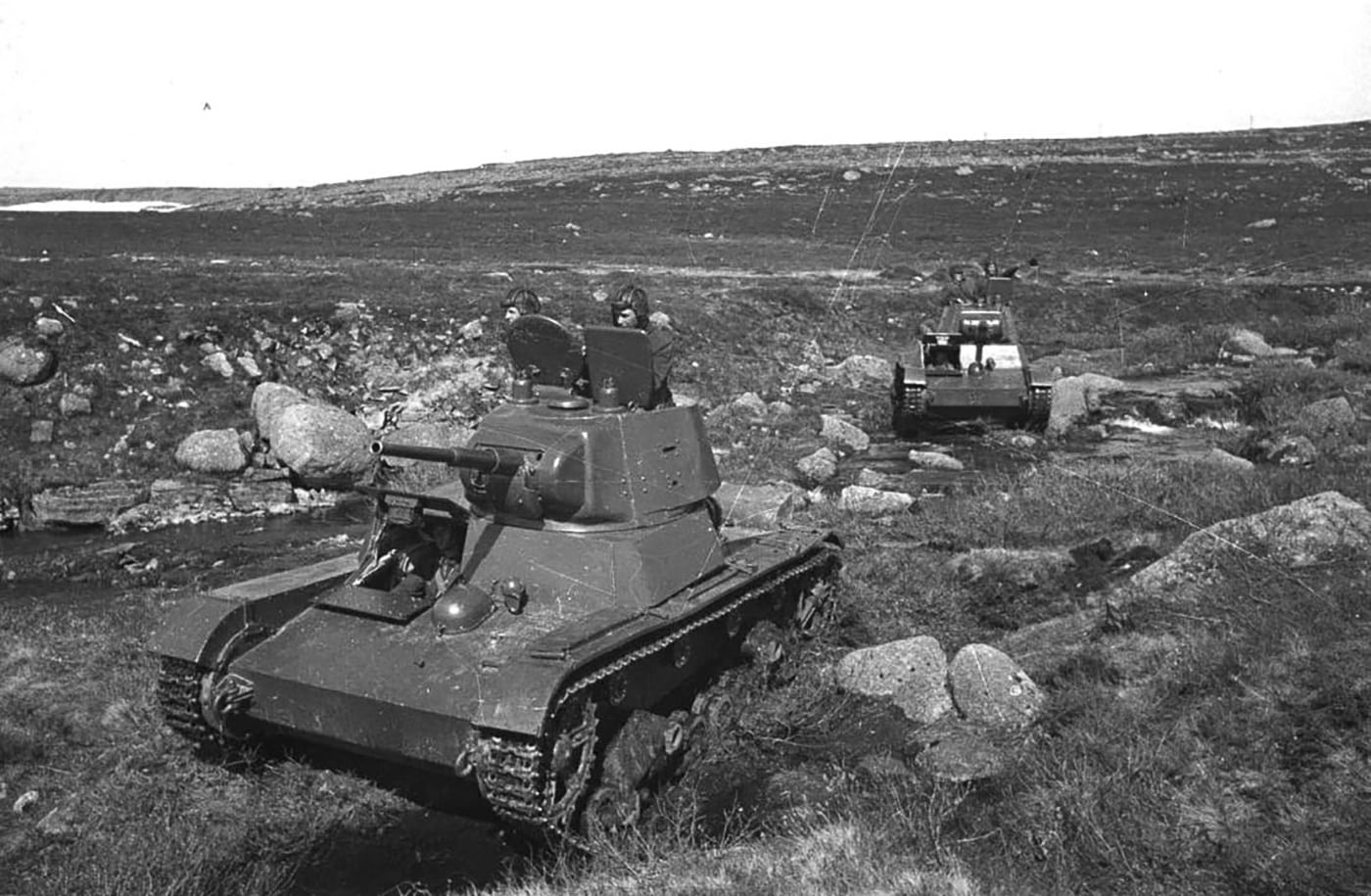
These T-26 tanks were photographed during Soviet military maneuvers near Kyiv, Ukraine in 1935. Image: IWM
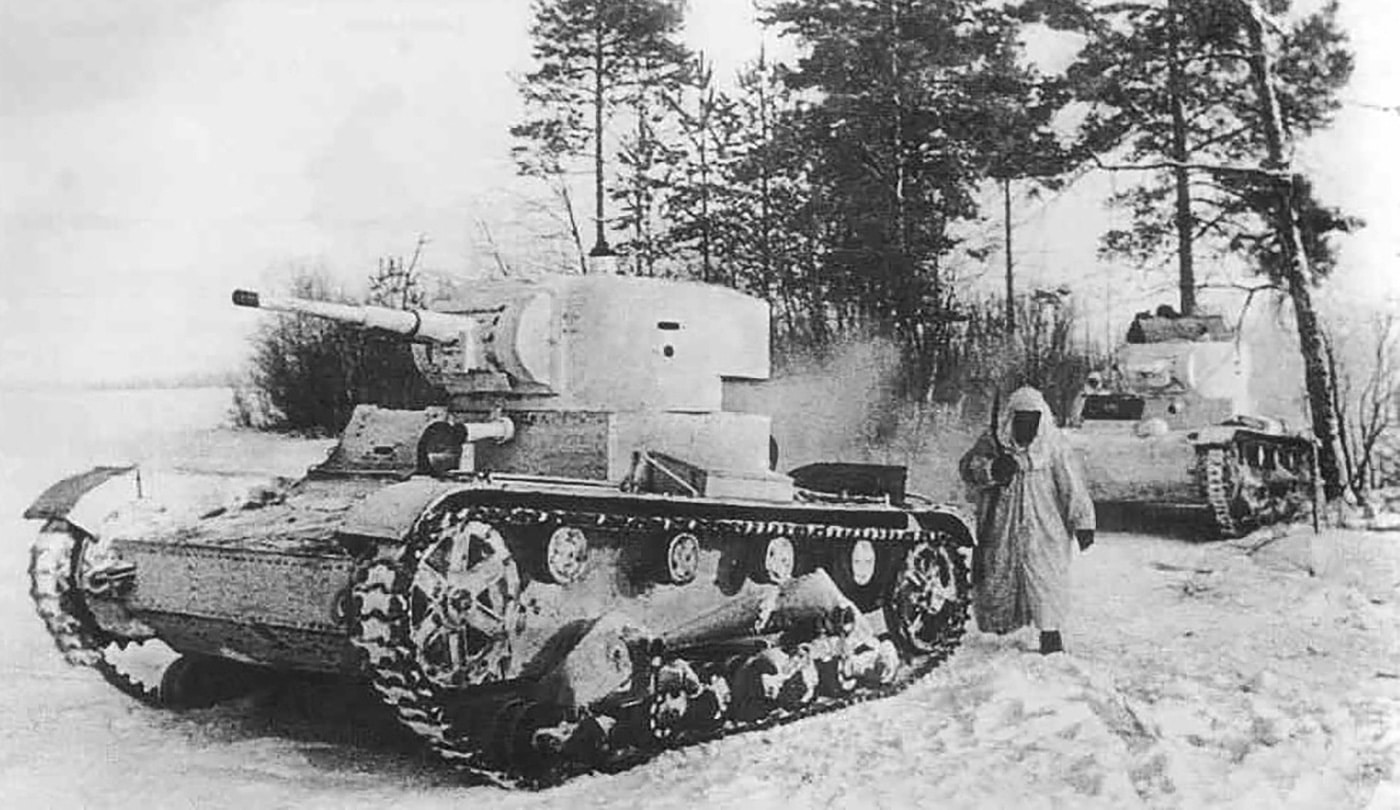
A Soviet T-26 tank in February 1940 during the Soviet invasion of Finland. Image: IWM
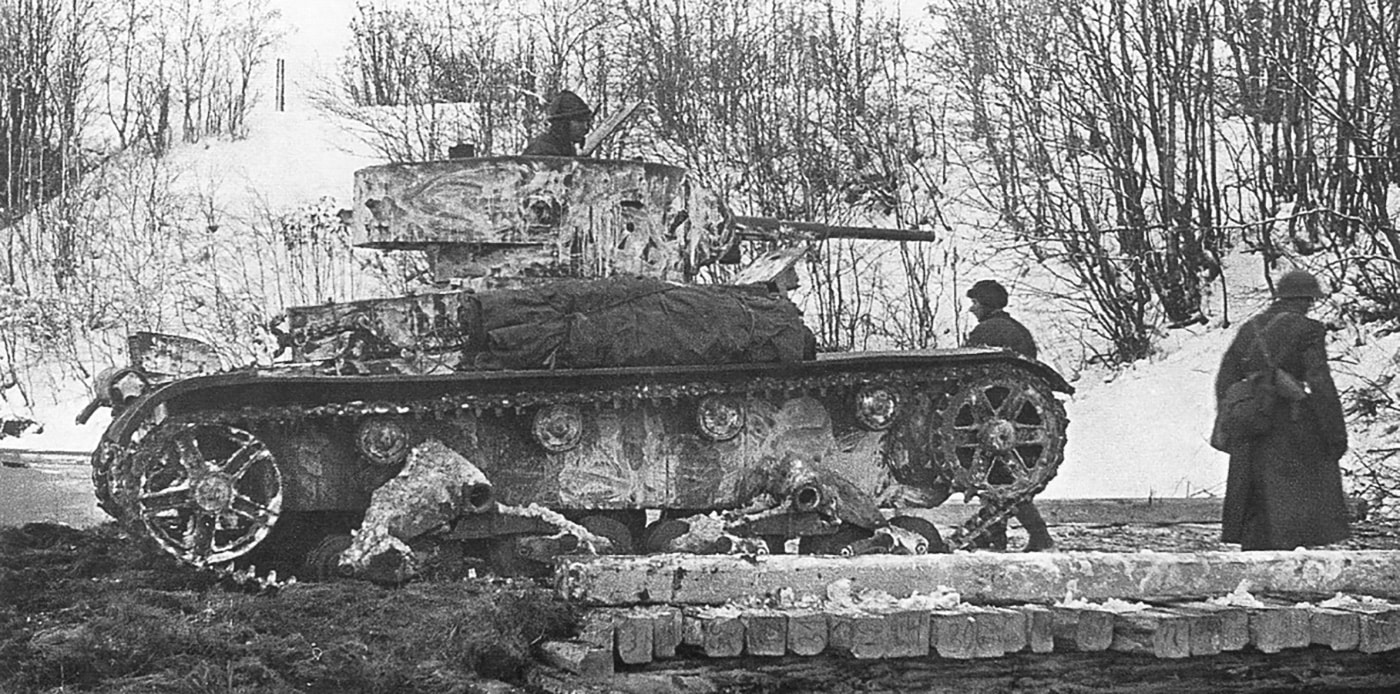
A T-26 tank crosses a bridge in the Finnish Karelian Isthmus during the Soviet invasion of Finland. Image: IWM
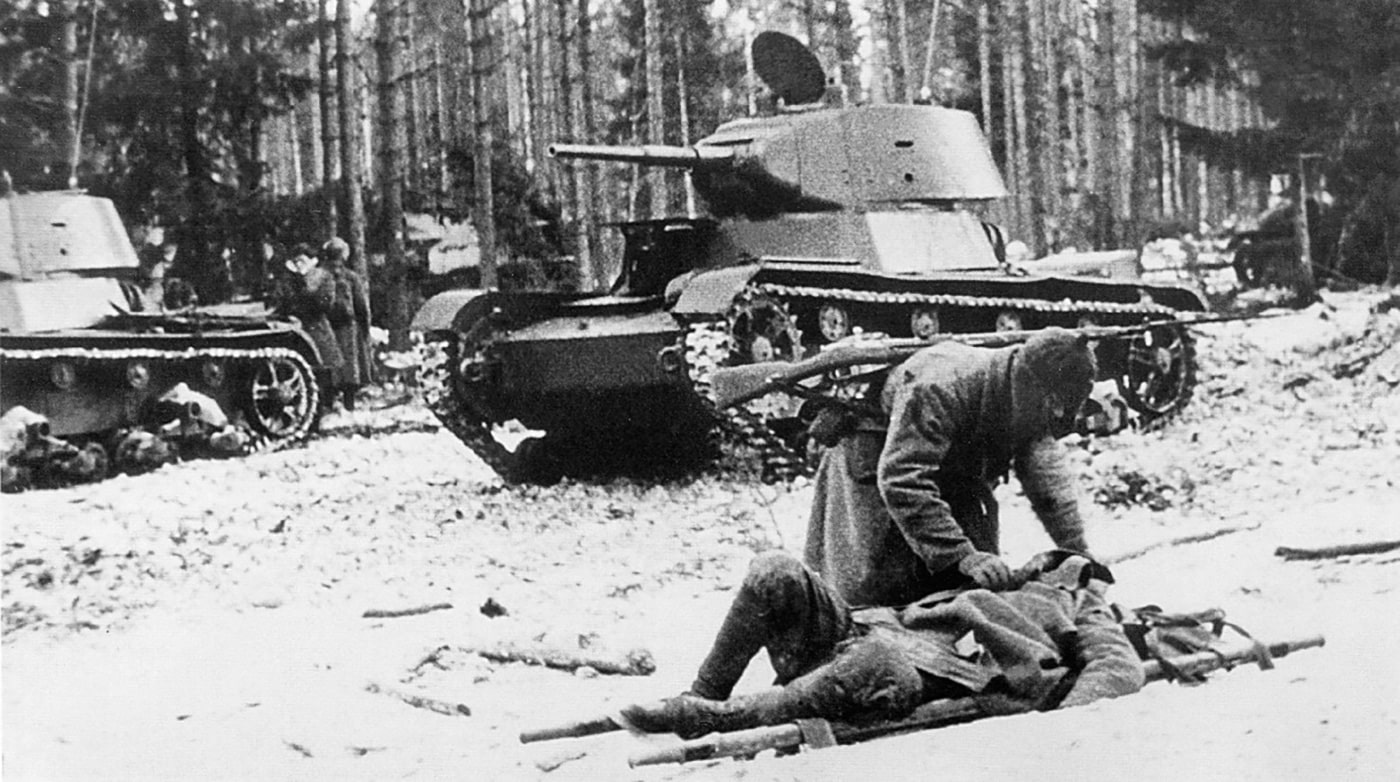
One Soviet soldier tends to a wounded comrade on a stretcher near several parked T-26 tanks in December 1939. The caregiver is armed with a Mosin-Nagant rifle. Image: IWM

A Turkish Army T-26 from the 1930’s at the Istanbul Military Museum in Istanbul. It is one of the few remaining T-26 tanks left in the world.




